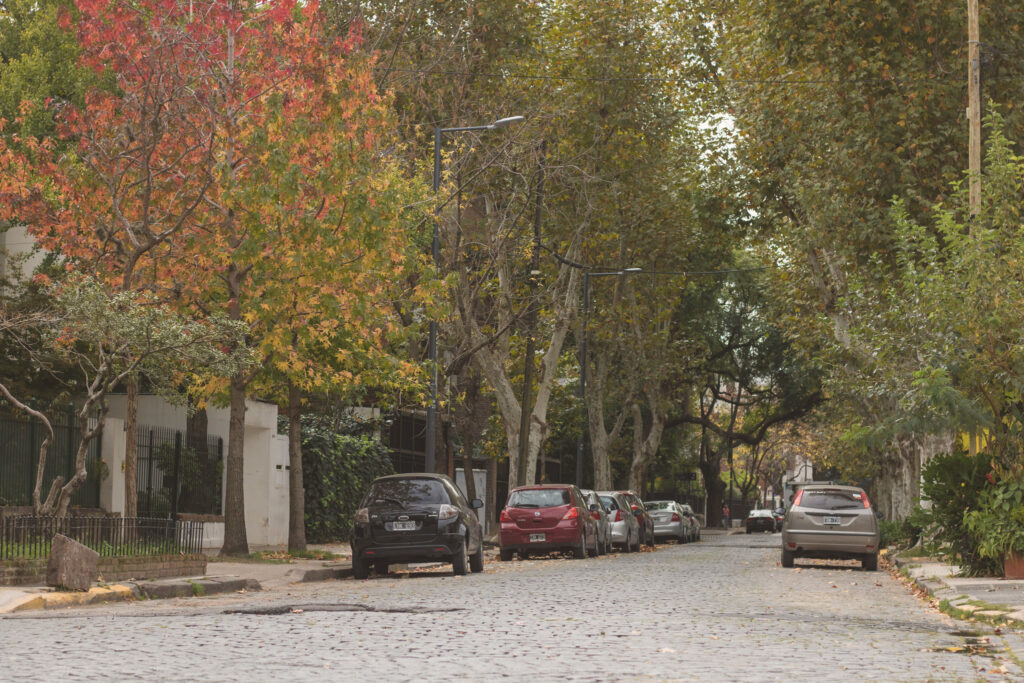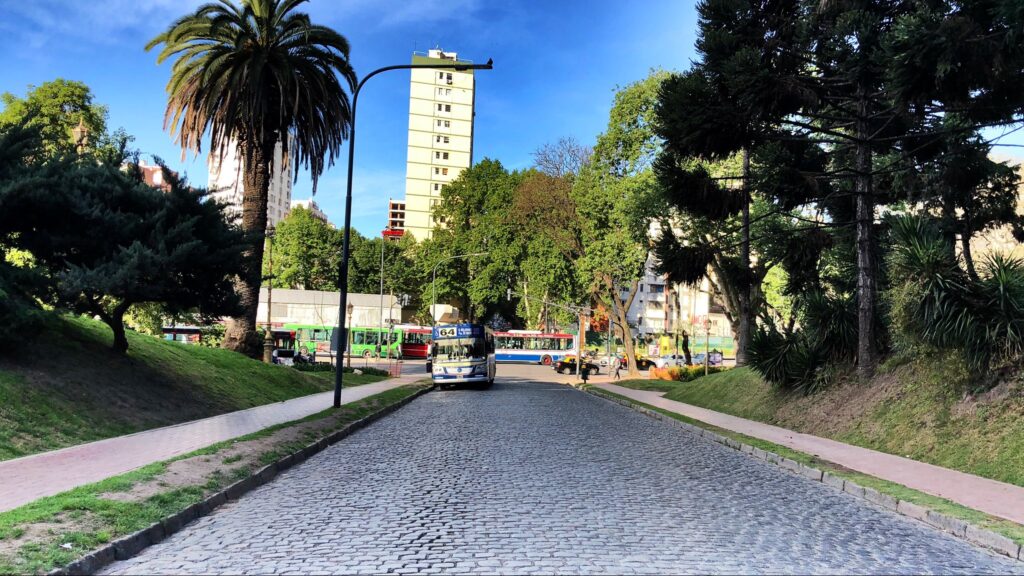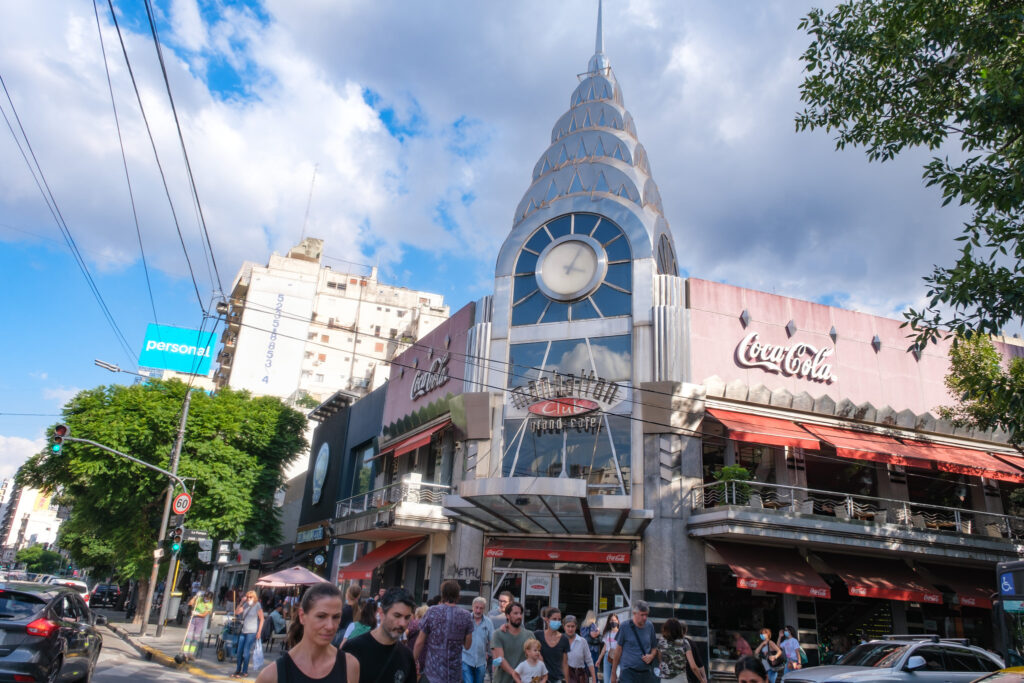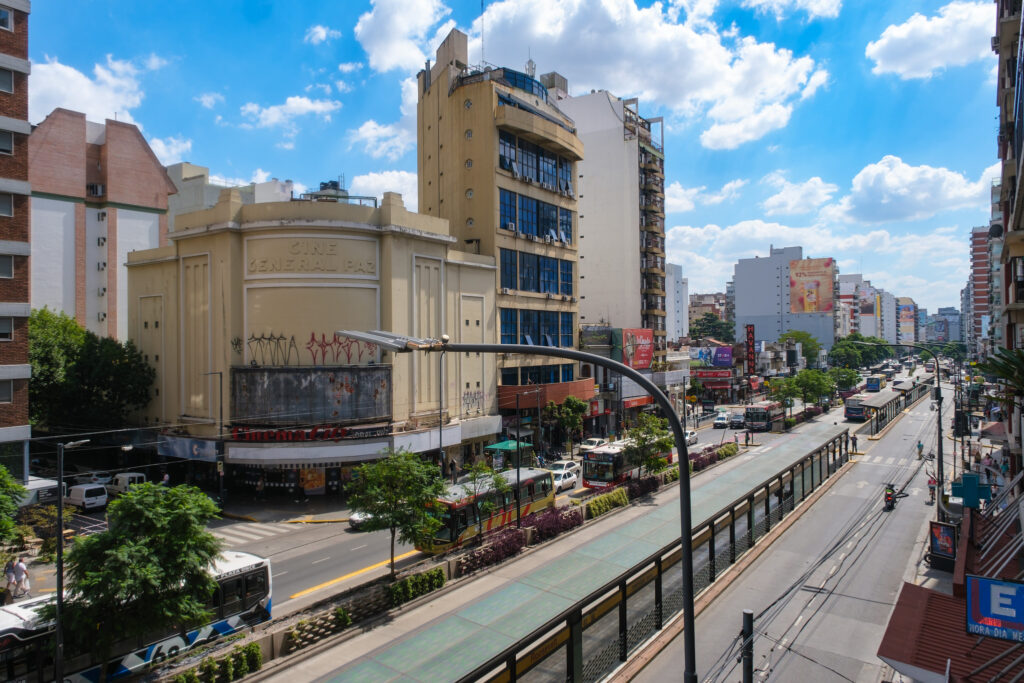Looking for the perfect blend of excitement and tranquility in Buenos Aires? Welcome to Belgrano, a neighborhood beloved by Argentinians and a hidden gem waiting to be explored. Beyond the noisy allure of Palermo lies its quieter yet equally captivating sibling, Belgrano.
This area, divided into charming subzones like Barrio Chino, the peaceful residential streets, the lively commercial hubs, and the vibrant surroundings of the River Plate Stadium, offers something for everyone.
Ideal for foreigners who want to avoid the typical hustle and bustle of Buenos Aires, Belgrano provides a serene escape from the traffic, noise, and nonstop activity.
Discover why Belgrano (Buenos Aires) is a top choice for living and visiting in our detailed guide on ExpatPathways, designed for digital nomads, travelers, and expats looking for their perfect spot in the city.
Belgrano (Buenos Aires): Everything You Want to Need About The Neighborhood
Basic Information About the Belgrano Neighborhood (Buenos Aires)
Belgrano, named in honor of the creator of the Argentine flag, was initially a municipality belonging to the province of Buenos Aires. Today, it is one of the most residential and picturesque neighborhoods in the city. Belgrano features many old and significant mansions, most typical of the late 19th century.
Part of Commune 13, Belgrano spans 6.8 square kilometers, celebrating its founding anniversary on November 23 each year. Since its origins in the late 19th century, Belgrano has been one of Buenos Aires’ 48 neighborhoods and a major commercial center.
It was a town, city, federal capital (for a brief period), and later a neighborhood after being legally absorbed by the Municipality of Buenos Aires.
Belgrano is characterized by its middle and upper-class residential areas and significant commercial importance. The neighborhood also features modern, sophisticated buildings alongside its historic mansions.
Notable landmarks include the Enrique Larreta Spanish Art Museum, the Church of the Immaculate Conception (commonly known as the Round Church, inaugurated on December 8, 1878), and the Casto Munita School, Argentina’s first school with all grades and the first to have mixed graduation.
The different areas of the Belgrano neighborhood
Belgrano, like its neighboring Palermo, has been divided into sectors with initially imprecise boundaries, later more defined by real estate firms.
Belgrano R
To the west of the commercial area (Belgrano C) lies Belgrano R, a high-class residential area home to some of Argentina’s most prestigious private schools, such as Buenos Aires English High School, Belgrano Day School, and the Mekhitarist School of Buenos Aires.
The name Belgrano R originates from the Buenos Aires to Rosario railway station, although it is popularly believed that the “R” stands for “residential.”
This area is known for its high-value houses, many in Tudor style from the 1920s, with main streets including La Pampa, Melián, and Forest Avenue.

Belgrano C
Though its exact boundaries are not well-defined, Belgrano C is roughly bordered by Avenida Cabildo, La Pampa Street, Avenida Virrey Vértiz, and Avenida Congreso, forming the central area of the old town of Belgrano.
Known as Barrancas de Belgrano, this park spans three blocks and is one of the city’s few places preserving the original topography of the Río de la Plata river valley bluff.
Bajo Belgrano
Initially a neighborhood of old low houses, the area gained value through land reclamation, construction of Avenida Cantilo, and the establishment of the University City by the river. Today, it features high-end houses and apartments alongside older, modest buildings.
Barrio Chino
In recent decades, increased Chinese immigration to Argentina has led to the formation of a Chinatown within Bajo Belgrano, between Libertador Avenue, Juramento, Monroe, and the railway tracks.
This area is home to numerous Chinese residents and businesses, including restaurants and shops offering Chinese and other oriental products.
Barrio Parque Gral. Belgrano
Also known as Barrio River, this area includes the Monumental Antonio Vespucio Liberti Stadium, home to Club Atlético River Plate and the Argentine national football team.
The neighborhood mainly features chalet-style houses, with height restrictions on buildings. It is bordered by Libertador Avenue, Monroe Avenue, and Udaondo Avenue.
Museums, Monuments, and Architecture
Belgrano is notable for its museums dedicated to art and history, including the Enrique Larreta Spanish Art Museum and the Sarmiento Historical Museum. Other museums in the area are Casa de Yrurtia and Libero Badii. Monuments and sculptures in Belgrano include the Statue of Liberty, the Belgrano Glorieta, and the Bust of General Manuel Belgrano.
Architectural highlights include the Hirsch Palace, the Church of the Immaculate Conception, the Parish of Santiago Apóstol, and attractions like the River Plate Stadium and the Belgrano Market.
Where Is Belgrano Located?
Belgrano is bordered by the wharf south of Jorge Newbery Airport, Avenida Costanera Rafael Obligado, La Pampa, Avenida Presidente Figueroa Alcorta, Avenida Valentín Alsina, the Mitre railway line (Tigre branch), an extension of Zabala, Zabala, Avenida Cabildo, Virrey del Pino, Crámer, Elcano, Avenida de los Incas, Avenida Forest, La Pampa, Avenida Doctor Rómulo Naón, Avenida Monroe, Avenida Ricardo Balbín, Franklin D. Roosevelt, Zapiola, Avenida Congreso, Avenida del Libertador, Avenida Guillermo Udaondo, Avenida Leopoldo Lugones, and an extension of Avenida Comodoro Martín Rivadavia.
It borders Palermo to the southeast, Colegiales to the south, Villa Ortúzar to the southwest, Villa Urquiza to the west, Coghlan to the northwest, Núñez to the north, and the Río de la Plata to the east. Its location in the northern part of Buenos Aires makes it historically preferred by the city’s middle-upper class.
Proximity to the Costanera Norte allows for extra leisure options, such as cycling or walking, and provides quick connections to Jorge Newbery Airport and Avenida General Paz, which encircles Buenos Aires and connects to routes heading north, west, and south of the Buenos Aires province.
Public Transport Network in Belgrano
Belgrano is one of the most accessible neighborhoods in the city, intersected by major avenues like Cabildo, Libertador, and La Pampa. It is served by numerous bus lines, protected bike lanes, and cycle paths.
The neighborhood has three train stations (Belgrano R and Belgrano C, on different branches of the Mitre line) and several subway stations (line D) along Avenida Cabildo, providing quick connections between this residential and commercial area and downtown Buenos Aires.
Green Spaces in Belgrano
Belgrano offers multiple green spaces for outdoor activities. The most famous is Barrancas de Belgrano, with its slopes and landscaping by French architect Carlos Thays.
Other popular parks include Plaza Noruega (great for kids with its variety of public games), Plaza Alberti, and Plaza Manuel Belgrano, which features surrounding architectural attractions like the Church of the Immaculate Conception (“La Redonda”).
The green spaces in Belgrano are well-distributed, ensuring a park or plaza is always nearby. The most significant concentration of green areas is near the River Plate Club, Avenida Figueroa Alcorta, and Avenida del Libertador.

Advantages of Living in Belgrano
- Belgrano is one of the largest and most extensive neighborhoods in Buenos Aires.
- Its northern location is especially attractive for those who want to live near Jorge Newbery Airport.
- Belgrano features a distinctly residential area with low houses and tranquility.
- The neighborhood offers a rich commercial and gastronomic scene, particularly near Avenida Cabildo, Chinatown, and Avenida del Libertador.
- If you seek a neighborhood away from typical tourist areas (Palermo, San Telmo, downtown Buenos Aires), Belgrano is worth considering.
- Belgrano is a middle and upper-class neighborhood with significant commercial and residential importance.
- Excellent connectivity with various transportation means shortens the apparent distance between the neighborhood and tourist spots in the city.
- The variety of green spaces makes Belgrano a favorite for people who frequently practice outdoor sports.
- In terms of safety, it is one of the most reliable neighborhoods after Recoleta and Puerto Madero.
Activities and Things to Do in the Belgrano Neighborhood (Buenos Aires)
Entertainment
Belgrano is a popular neighborhood for its vibrant social life, offering numerous entertainment options close to home despite its residential nature. Most activities are concentrated near the main avenues, Barrio Chino, and Avenida Libertador, with the southeastern border near Palermo also bustling with activity.
Belgrano is one of the neighborhoods with the most cinemas in Buenos Aires, all within a few blocks between Juramento and Congreso Avenues.
The neighborhood also features two significant theaters, the Auditorio de Belgrano and Teatro Larreta, along with several notable museums, such as the Enrique Larreta Spanish Art Museum, the Sarmiento Historical Museum, and the Casa Yrurtia Museum.

Barrio Chino
A major attraction for both locals and tourists is Barrio Chino on Arribeños Street. Just meters from Barrancas and the Belgrano C station, this area is filled with Asian restaurants, grocery stores, souvenir shops, and fish markets frequented by the city’s top chefs. It is undoubtedly one of the most picturesque spots in the northern part of the city.
Don’t forget to take a photo at the iconic arch or entrance gate to Barrio Chino, a symbol of Chinese culture and the neighborhood itself.
Gastronomy
Belgrano offers a wide range of dining options for all types of consumers, budgets, and occasions. From fast food chains on Avenida Cabildo to the patisseries on Avenida Libertador, the tea houses in Belgrano R, and international cuisine restaurants.
The restoration of the Belgrano Market, housed in a building dating back to 1891, added a high-quality gastronomic and tourist attraction for locals and visitors. Here, you can buy gourmet delicacies and enjoy a well-prepared quick meal.
Near Barrio Chino, there are plenty of oriental restaurants and food shops, but they are not the only places to enjoy a good meal in the neighborhood.
Shopping Centers
One of the main reasons to live in Belgrano is its blend of residential charm with a strong commercial presence.
Beyond the shops on Avenida Cabildo, the area features historic galleries, promenades, and countless stores where you can find the perfect gift or any other necessity, all within walking distance.
Whether you need to buy clothing or a spare part for your mobile phone, Belgrano has a store or several offering what you need. This convenience makes Belgrano an attractive neighborhood for foreigners looking to have everything concentrated in one area.

Enjoy the Green Spaces
Belgrano boasts numerous green spaces scattered throughout the neighborhood, from small plazas to parks bordering tourist attractions, from Costanera Norte to Barrio Chino, and the iconic Monumental stadium of Club Atlético River Plate.
A Neighborhood Ideal for Athletes
Many travelers consider the availability of sports facilities and open spaces when choosing a neighborhood to stay in or live in.
Unlike the central neighborhoods of Buenos Aires, Belgrano and its neighboring areas offer plenty of green spaces for sports activities.
From bike lanes to running paths around parks and plazas, Belgrano is a neighborhood where you can easily practice sports.
The neighborhood also features important clubs and sports centers, starting with the facilities of Club Atlético River Plate, skate parks, and various sports complexes.
Last Considerations
Have you considered Belgrano, one of Buenos Aires’ most sought-after neighborhoods, for your next stay? This neighborhood offers a perfect blend of tranquility, commercial convenience, and safety, making it an ideal choice for those looking to stay in Buenos Aires.
Although the cost of living may be higher, you’ll find that Belgrano offers everything you need. With multiple zones to choose from, each with its unique charm, and abundant green spaces that provide a respite for travelers seeking proximity to parks and plazas, Belgrano is the perfect neighborhood.
Discover all that Belgrano (Buenos Aires) has to offer and why it’s the ultimate destination for digital nomads, travelers, and expats by visiting our detailed guide on ExpatPathways. Make Belgrano your next destination and experience the best of Buenos Aires.
(Featured Image Source: valentinacastillo2/flickr.com)


